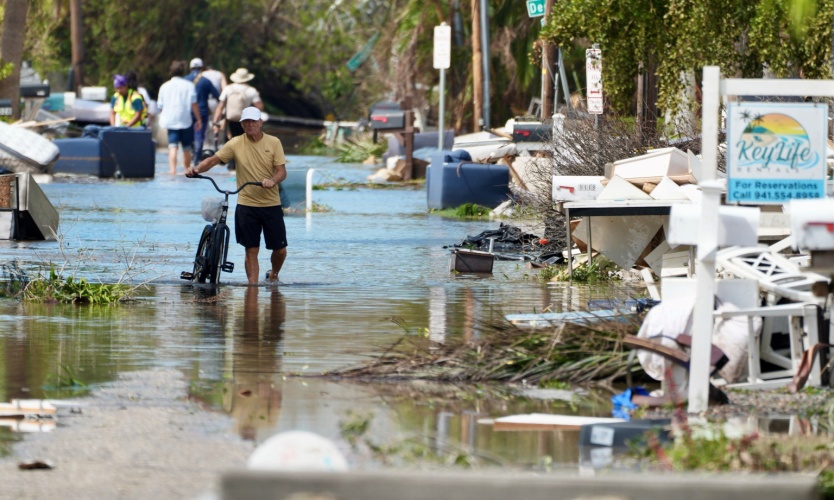Property outlook uncertain after storms; casualty increases expected
- June 15, 2025
- Posted by: Web workers
- Category: Finance

CHICAGO — Hurricane Milton barreled toward Florida’s Gulf Coast last week as insurers, reinsurers and brokers discussed renewals at a crucial market meeting, clouding the outlook for property catastrophe pricing.
While the storm was less destructive than initially feared, as it was downgraded from a Category 5 to a Category 3 hurricane before it made landfall south of Tampa, the insured loss tally remains unclear. On Oct. 14, modeling firm Moody’s RMS said the range of insured losses for Helene and Milton would be $35 billion to $55 billion.
While uncertainty over losses obscured the outlook for property, experts who attended the American Property Casualty Insurance Association meeting in Chicago Oct. 7 and 8 were more confident that liability rates would increase at upcoming renewals.
APCIA’s annual conference, a key meeting for reinsurance renewal discussions, took place as several recent market surveys showed property insurance rate increases decelerating or rates even falling in some cases.
However, a few days before APCIA, Hurricane Helene hit the southeastern United States, causing historic flooding far inland and insured losses that could exceed $10 billion, according to early estimates. And while discussions occurred, Hurricane Milton was churning above the Gulf of Mexico.
Nevertheless, executives said the storms could still have a limited impact on the market because reinsurers and insurers have restructured their portfolios significantly over the past several years.
The property reinsurance sector has seen significant price increases since 2022, when Hurricane Ian struck Florida, causing about $50 billion in losses, and reinsurers posted strong results in 2023, noted Claude Yoder, New York-based global head of analytics at Lockton Re, the reinsurance brokerage unit of Lockton Cos. LLC.
“Even if (Milton) is $50 billion, it’s very much within what the reinsurance market can handle,” he said.
Property insurers have increased prices, restructured deductibles and included provisions such as roof depreciation schedules, which lower payouts for older roofs, said Kyle Menendez, New York-based managing director at Howden Re, a unit of Howden Group Holdings Ltd.
In addition, property catastrophe reinsurance rates have hardened, he said.
Allowing for uncertainty over losses from Hurricane Milton, Mr. Menendez said the insurance and reinsurance sectors should “continue to get healthier” with the combined trend.
The property insurance market has stabilized this year, and it’s unclear whether the recent storms will significantly affect the overall market conditions, said Philip Wray, New York-based executive vice president, property, at MSIG USA, a unit of Japanese insurer Mitsui Sumitomo Insurance Company Ltd.
“I’m not sure Helene will have a big impact on the market, but it might have an impact on sentiment because it created losses that people didn’t perceive,” he said.
Many of the losses related to Hurricane Helene were from flooding rather than wind, so they will likely not affect the reinsurance market, said Randy Fuller, a Tampa, Florida-based managing director at Guy Carpenter & Co. LLC.
While it’s too early to tell what effect Milton will have, reinsurance capacity continues to increase and demand for reinsurance coverage is also growing, he said.
“A lot of that demand is being driven by two things,” Mr. Fuller said. “One is, we’ve got some vendor model changes that are flowing through, not creating increases for everyone, but on balance, it’s an increase, and then we are also seeing a sort of delayed impact of inflation.”
Property reinsurance rates were increasing sharply when inflation was at its height in 2022 and 2023, so some cedents were not in a position to buy additional limits to cover their expanding portfolios, he said.
“Now that the market settled down a bit, we are seeing more clients kind of topping up that limit,” Mr. Fuller said.
Reinsurance capacity has increased over the past year, but that has been mainly from existing reinsurers, who will have greater control over where they deploy that capacity, said Mr. Yoder of Lockton Re.
Liability insurance and reinsurance rate increases are likely to be sustained, experts say.
Rates have been increasing over the past several years, but concerns remain over reserve developments for past years, increasing court awards and settlements. and emerging liabilities such as perfluoroalkyl and polyfluoroalkyl substances or PFAS, Mr. Yoder said.
“On average, everyone is saying rates are going up, but where there are differences of opinion, it is more to do with ‘Do we have the losses correct for the old accident years and even some of the more recent accident years?’ Increasingly, we think carriers are moving to the right reserve levels,” he said.
The liability insurance and reinsurance market is segmented into recent entrants, who are not weighed down by past losses; companies that are satisfied with their reserve positions for past years; and some large companies with concerns over deteriorating loss trends for business they wrote between 2015 and 2020 and are looking to reduce their portfolio, Mr. Menendez said.
Concerns over loss trends may lead to lower ceding commissions paid by reinsurers to insurers in proportional treaties, but this will depend on individual results, he said.
“The leveraged nature of excess of loss layers could manifest itself into rates continuing to go up, but again, some of it is dependent on how much rate is achieved in the primary market,” Mr. Menendez said.
Reinsurers will look for increased profit margins on liability business, which primary rate increases may generate, he said.



